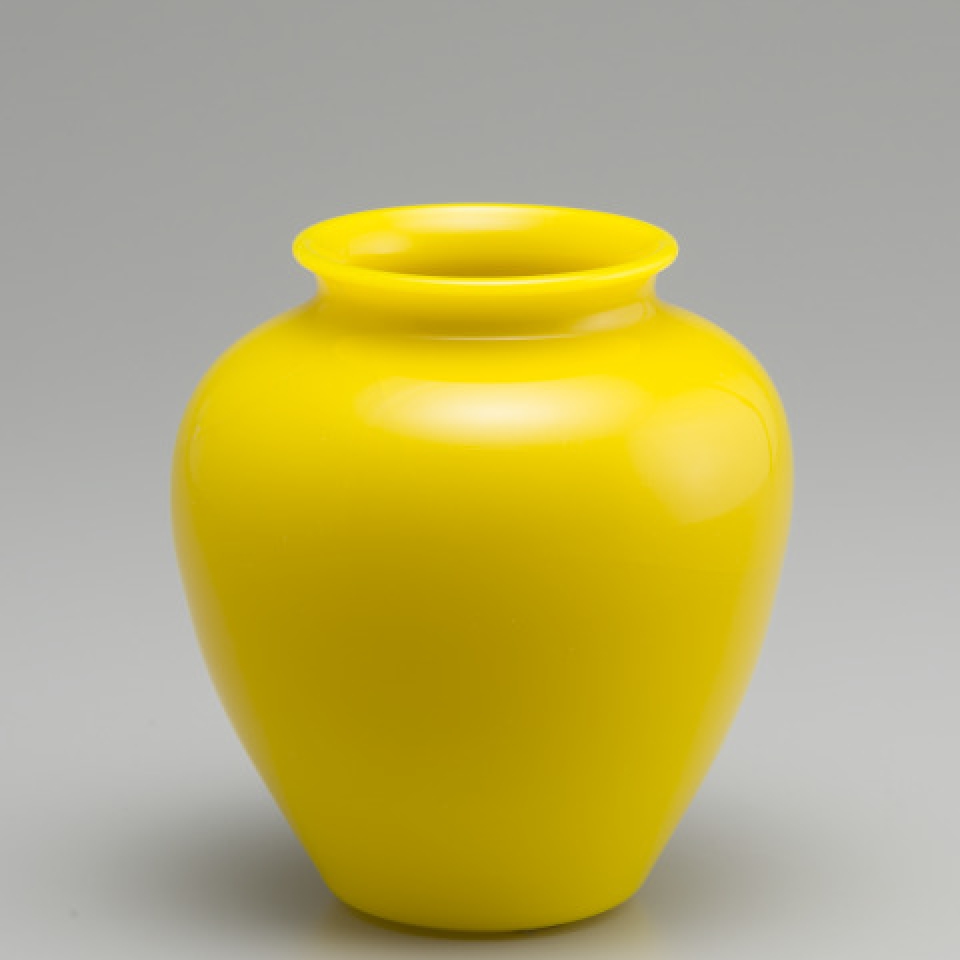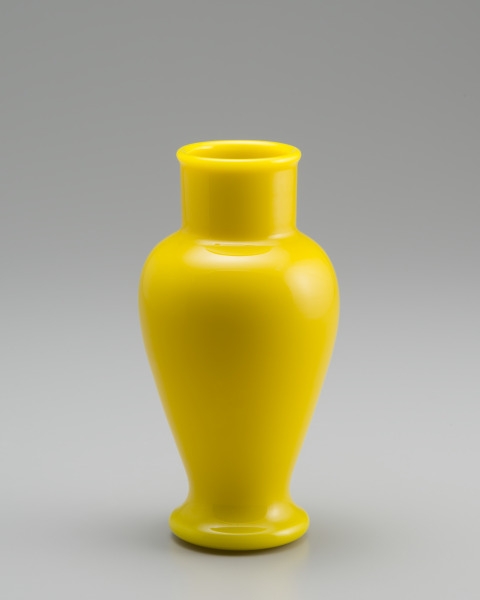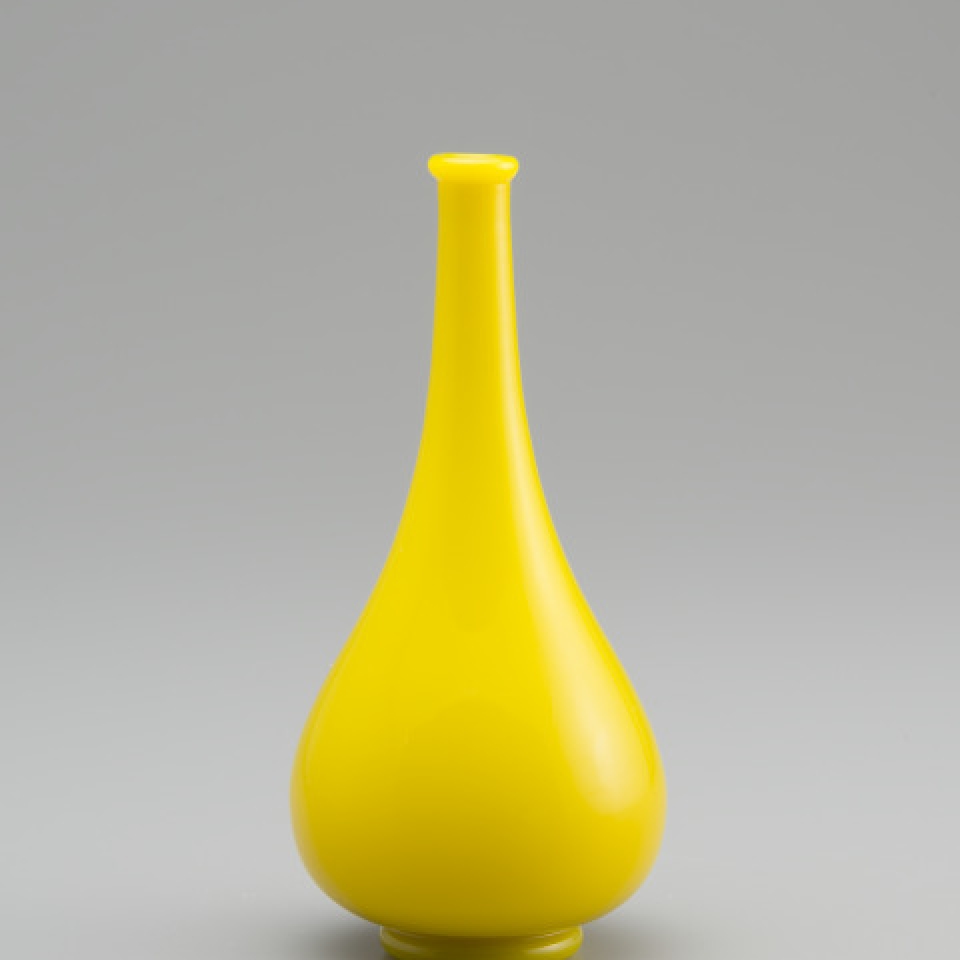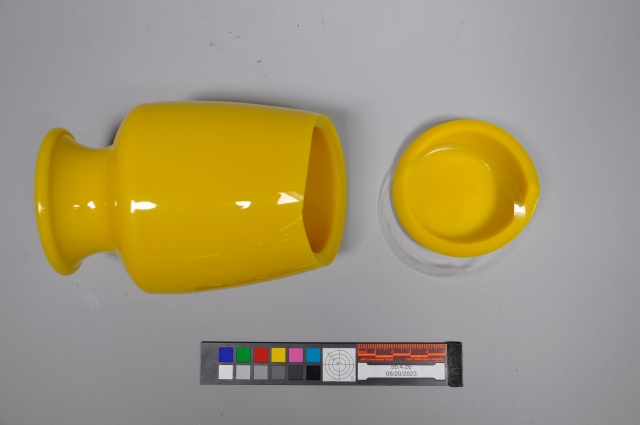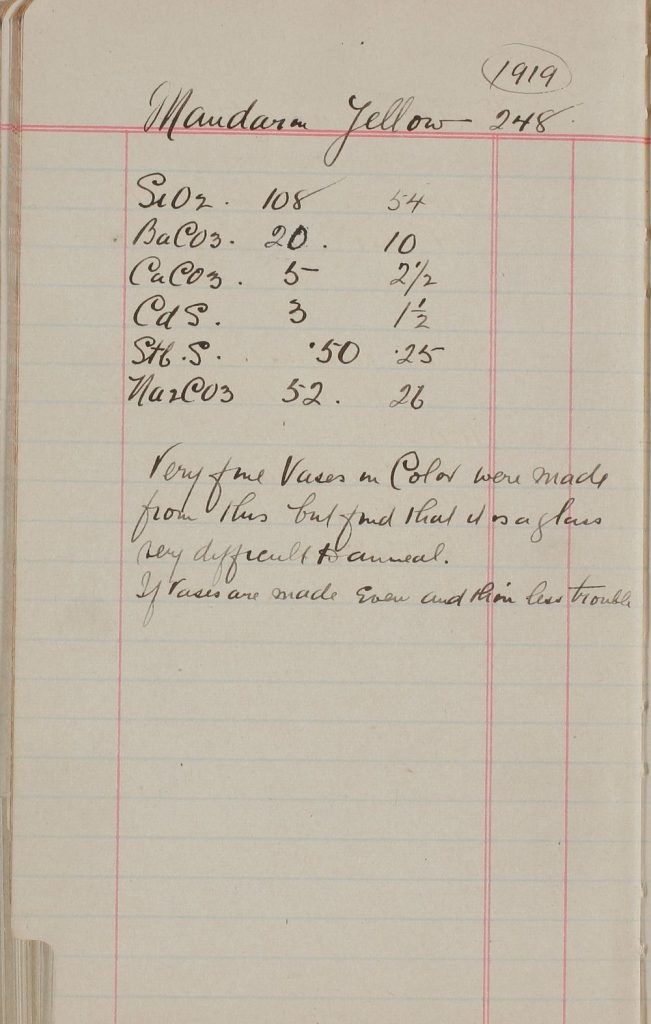Mandarin Yellow – Rare and Fragile
Jan 15, 2024
Issue 3699
An article titled “A Fugitive Color: Frederick Carder’s Mandarin Yellow” was posted by Jonathon Heath to CMoG’s blog last summer. The blog post came from the Museum’s 2023 conservation intern, Theresa ‘Terri’ Costello.
Terri wrote: Having an object come apart in my hands was not something I expected to happen during my internship, but there are always surprises when working closely with museum objects. As the conservation intern for the summer, one of my tasks was to conduct condition checks on objects being moved to different locations within the Museum or going on loan. One such object was a Steuben Glass vase, which was being relocated from the Carder Gallery to make way for the StudioNEXT project. Handling fragile objects is an important part of a conservator’s work, so I was careful when holding the vase. However, during the condition check, the bottom half suddenly separated from the top. This unfortunate incident prompted my investigation into a fascinating and rare type of glass.
The glass manufactured by Steuben Glass under the leadership of Frederick Carder is known for the wide variety of colors used. This variety is exemplified in the current exhibition, Local Color: Secrets of Steuben Glass. Carder strove to create new colors, coming up with inventive formulas to achieve them. However, in his quest for new colors, Carder sometimes created glasses which were not stable. One such ambitious color attempt was the so-called “Mandarin Yellow”, which was inspired by the color of yellow Chinese porcelain from the Ming Dynasty. In attempting to achieve a similar opaque, bright yellow, Carder inadvertently compromised the glass’ chemistry.
There are only about twelve Mandarin Yellow objects surviving to present day. It was already known when these objects were created that this color could not be annealed well. Annealing is the process in which hot glass is slowly cooled to prevent internal strains from sudden temperature change. Carder wrote about the Mandarin Yellow recipe in his personal notes from 1919: “Very fine vases in color were made from this but find that it is a glass very difficult to anneal. If vases are made even and thin less trouble.” The glass often retained internal stresses due to improper annealing, which once released, would cause major cracking of the object. The former assistant to Carder, Paul Gardner, attributed the small number of surviving examples to the “fugitive quality of this glass”, or in other words, its tendency to break.
The vase which fell apart in my hands was a Mandarin Yellow object. According to a conservation report from 1980, the vase had broken into two pieces at one point but was glued back together with epoxy resin. Now in 2023, the vase separated along the same break again because the previously applied glue failed. Finding out that the old glue was epoxy resin surprised me, since epoxy resin is considered a strong glue. This mystery prompted my investigation into why the glue failed and the object came apart again.
Terri’s blog continues with details of her investigation into the glass composition, including Carder’s recipe. She explains why Mandarin Yellow is unstable and why the glue failed. Her work includes spectral analysis of the glass that is reminiscent of past Symposium presentations by Greg Merkel. If you would like to read more about this rare and fragile glass, click here to continue to the educational blog article.
About Theresa Costello: Terri is originally from New Hampshire but has spent the last eight years studying in Europe. Terri has a Bachelor’s degree in ancient history and archaeology from Trinity College Dublin, a Masters in conservation and restoration of glass and ceramic cultural heritage objects from the University of Amsterdam, and is currently finishing up a two-year post-Masters in Amsterdam. During her internship at Corning, Terri carried out practical treatments of objects and conducted research into the composition of Carder’s Mandarin Yellow glass. You can follow Terri’s conservation journey on Instagram: t.costello.conservation
MEMBER ZOOM MEETING FEB 4th, 4 – 6 PM EST
We have a special presentation for our Members ZOOM meeting in February. We had a very generous donation of glass from a family collection to our 2023 Symposium auction. Family members will be joining our meeting to tell the story behind the glass — it starts with a glass engraver immigrating to the US to work in Corning. Please mark your calendars and make plans to attend.
SAD NEWS
Barbara (Hotham) Iglewski, age 85, gently passed away on Sunday, December 10, 2023. Barbara earned a Bachelor’s degree in Biology and a PhD in Microbiology, and was recruited as the first female department chair for the University of Rochester School of Medicine and Dentistry. She successfully led the department of Microbiology and Immunology for 23 years and was respected for her leadership, hard work, honesty, and generosity. Barbara received many accolades throughout her career but was especially proud to be inducted into the National Women’s Hall of Fame in 2015, honored for her ground-breaking research on how bacteria cause infections. More than an accomplished educator and researcher, Barbara balanced her life with many other interests, including travelling, rug hooking and collecting art glass.
Barbara was a long-time member of the Carder Steuben Glass Association going back to the Friends of Carder days. We extend our condolences to her family and friends.
2024 MEMBERSHIP
Thanks to all who have submitted your CSGA membership renewals for 2024. Your Corning Museum of Glass membership cards will be processed shortly. For those who might not have renewed yet, please take a moment and lend your support today! It’s fast and easy to renew on the website here. Thank you!
